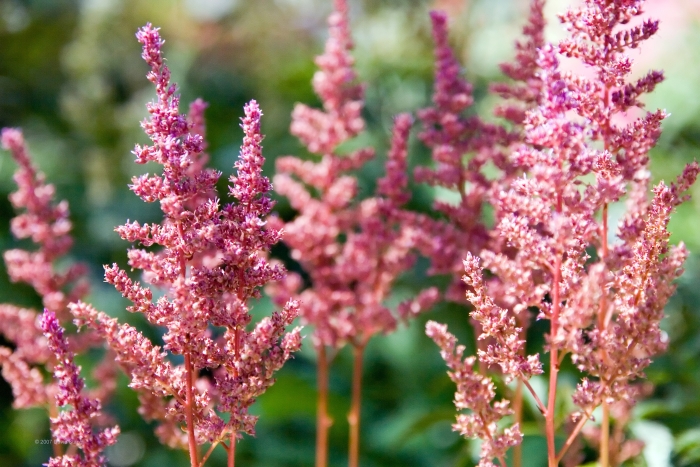False Spirea
(Astilbe japonica)
False Spirea (Astilbe japonica)
/
/

Photo by David J. Stang
CC BY-SA 4.0
Image By:
Photo by David J. Stang
Recorded By:
Copyright:
CC BY-SA 4.0
Copyright Notice:
Photo by: Photo by David J. Stang | License Type: CC BY-SA 4.0 | License URL: https://creativecommons.org/licenses/by-sa/4.0 | Uploader: David Stang | Publisher: Wikimedia Commons | Title: Astilbe_japonica_Elizabeth_van_Veen_0zz.jpg | Notes: Transferred from Flickr via #flickr2commons |




























Estimated Native Range
Summary
Astilbe japonica, commonly known as false spirea or Japanese astilbe, is a herbaceous perennial native to the mountain ravines and woodlands of Japan. It typically grows to a height of 24-36 inches (60-90 cm) and a width of 18-24 inches (45-60 cm). The plant features pyramidal plumes of tiny flowers in shades of white, pink, and red, which bloom in late spring to early summer and are highly ornamental. The foliage is deeply lobed and fern-like, adding texture to the garden even when the plant is not in bloom.
Astilbe japonica is valued for its showy flowers and ability to thrive in shady conditions, making it a popular choice for woodland gardens, shaded borders, and as a ground cover under trees. It is also used for cut flowers due to its attractive flower plumes. This plant prefers consistently moist, fertile soils with good drainage and can tolerate heavier clay soils if moisture is adequate. It is important to avoid letting the soil dry out, as Astilbe is intolerant of drought. While generally disease-resistant, it can suffer from powdery mildew if airflow is poor or if it’s too dry.CC BY-SA 4.0
Astilbe japonica is valued for its showy flowers and ability to thrive in shady conditions, making it a popular choice for woodland gardens, shaded borders, and as a ground cover under trees. It is also used for cut flowers due to its attractive flower plumes. This plant prefers consistently moist, fertile soils with good drainage and can tolerate heavier clay soils if moisture is adequate. It is important to avoid letting the soil dry out, as Astilbe is intolerant of drought. While generally disease-resistant, it can suffer from powdery mildew if airflow is poor or if it’s too dry.CC BY-SA 4.0
Plant Description
- Plant Type: Herb
- Height: 3-4.5 feet
- Width: 6-9 feet
- Growth Rate: Moderate
- Flower Color: Pink, Red, White
- Flowering Season: Spring, Summer
- Leaf Retention: Deciduous
Growth Requirements
- Sun: Part Shade, Full Shade
- Water: Medium
- Drainage: Medium
Common Uses
Bee Garden, Bird Garden, Border Plant, Butterfly Garden, Deer Resistant, Groundcover, Hummingbird Garden, Low Maintenance, Potted Plant, Rabbit Resistant, Rock Garden, Showy Flowers
Natural Habitat
Mountain ravines and woodlands of Japan
Other Names
Common Names: False Spiraea, False Goat’s Beard, Japanese Astilbe, Japanische Astilbe, Astilbe Du Japon, Silverastilbe
Scientific Names: , Astilbe japonica, Hoteia japonica, Astilbe japonica f. rubeola, Astilbe japonica f. pygmaea, Astilbe barbata, Astilbe japonica f. latifolia, Astilbe japonica var. angustifoliolata, Astilbe japonica var. densiflora, Hoteia barbata,
GBIF Accepted Name: Astilbe japonica (C.Morren & Decne.) A.Gray